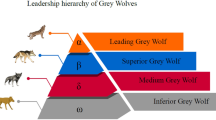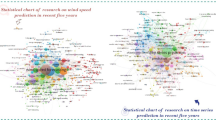Abstract
The prediction accuracy and prediction time are key elements that determine the landing safety of the carrier-based aircraft when ship motions in six-degree freedom are difficult to restrain. The classical prediction methods, such as auto-regressive and moving average model (ARMA) and radical basis function neural network (RBF-NN), always suffer from the drawbacks of short prediction time and low accuracy caused by the nonlinearity and randomness of deck-motion. Aiming to lengthen prediction time and improve prediction accuracy, an online prediction method based on Least Square Support Vector Machine (LSSVM) is proposed with the comprehensive consideration of the characters of deck-motion and inertial navigation system (INS)—an instrument to measure motions including deck-motion. For the sequentiality and timeliness of deck-motion, the proposed online LSSVM prediction method is divided into two stages—information accumulation stage and information window stage. To acquire optimal parameters for LSSVM—the number of samples, the length of sample, the parameter for kernel function and the penalty factor, genetic algorithm (GA) is adopted; in addition, the fitness function for GA is designed according to the periodicity of deck-motion. The prediction tests are conducted with data from deck-motion models and sea trail, respectively, and the results indicate that the proposed method can provide a preferable result compared with those methods based on ARMA, RBF-NN and Particle Swarm Optimization and Kernel Extreme Learning Machine (PSO-KELM) when the data mapping relations are nonlinear and changeable.















Similar content being viewed by others
References
John L (1974) Automatic landing systems are here[R]. AD-2714925, USA, pp 1–15
Durand TS, Teper GL (1964) An analysis of terminal flight path control in carrier landing. Systems Technology Inc., Inglewood
Jonson G, Peterson B, Taylor J et al (2010) Test results of F/A-18 autoland trials for aircraft carrier operations. Aerospace conference, 2010, IEEE proceedings, Big Sky, MT, US, 3, pp 1283–1290
Petovello M, Keefe K, Lachapelle G et al (2009) Measuring aircraft carrier flexure in support of autonomous aircraft air-craft landings. IEEE Trans Aerosp Electron Syst 45(2):525–535
Perez T (2005) Ship motion control: course keeping and roll stabilization using rudder and fins. Springer, Berlin
Backalov I, Bulian G, Cichowicz J et al (2016) Ship stability, dynamics and safety: status and perspectives from a review of recent STAB conferences and ISSW events. Ocean Eng 116:312–349
Sidar MM, Doolin BF (1983) On the feasibility of real-time prediction of aircraft carrier motion at sea. IEEE Trans Autom Control 28(3):350–356
Yang X, Pota H, Garratee M et al (2008) Ship motion prediction for maritime flight operations [C]. Proceedings of the 17th world congress, the international federation of automatic control, Seoul, Korea, July 6–11
Shen J, Li Y, Meng X (2010) Prediction pitch and heave motion of ship via inverse triangle transform MGM(1, n) model. Processing of the 2010 IEEE international conference on mechatronics and automation, 2010 Aug, 1460–1465
Yin J, Zou Z, Xu F (2013) On-line prediction of ship roll motion during maneuvering using sequential learning RBF neural networks. Ocean Eng 61:139–147
Wu X, Han X, Li Y (2014) Short-term forecasting of ship swaying motions based on improved AR model. Navig China 37(1):112–115
Li J (2007) Ship seaworthiness. Harbin Engineering University Press, Harbin
Wang K (2007) Control theory of the objects in ocean. Harbin Engineering University Press, Harbin
Chung J, Bien Z, Kim Y (1990) A note on ship-motion prediction based on wave-excitation input estimation. IEEE J Ocean Eng 15(3):244–250
Hirakawa Y, Susaki H, Sasaki S et al (2015) Acquisition of ocean wave surface by x-band ship radar and very-short-term wave surface prediction. J Jpn Soc Naval Archit Ocean Eng 22:235–242
Titterton DH, Weston JL (2004) Strapdown inertial navigation technology, 2nd edn. Lavenham Press Ltd.,London
Gaiffe T (2002) From R&D brassboards to navigation grade FOG-based INS: the experience of Photonetics/Ixsea. Optical fiber sensors conference technical digest, pp 1–4
Yin J, Zou Z, Xu F et al (2014) Online ship roll motion prediction based on grey sequential extreme learning machine. Neurocomputing 129:168–174
Triantafyllu M, Bodson A, Athans M (1983) Real time estimation of ship motions using Kalman filtering techniques. IEEE J Ocean Eng 8(1):9–20
Jia XQ, Lin P, Wang MW et al (2010) Study on disturbance of board movement in process of carrier aircrafts landing and its compensation. Aeronaut Comput Tech 40(1):114–118
Zhou J, Peng X, Liu L et al (2011) Nonlinear ship motion prediction via a novel high precision RBF neural network. Adva Inf Sci Serv Sci 3(10):45–52
Huang J, Ma L, Qian J (2004) Improved support vector machine for multi class classification problems. J Zhejiang Univ Eng Sci 38(12):1633–1636 (1659)
Thissen U, Brakel R, Weijer AP et al (2003) Using support vector machines for time series prediction. Chemometr Intell Lab Syst 69:35–49
Chen Q, Li W (2011) JZhao. The use of LS-SVM for short-term passenger flow prediction. Transport 26(1):5–10
Mohandes MA, Halawani TO, Rehaman S et al (2004) Support vector machines for wind speed prediction. Renew Energy 29:939–947
Ma L, Luan S, Jiang C et al (2009) A review on the forecasting of wind speed and generated power. Renew Sustain Energy Rev 13(4):915–920
Suykens JAK, Lukas L, Vandewalle J (2000) Spare approximation using least squares support vector machines. The 2000 IEEE international symposium on circuits and systems, 28–31, May, 2000, Geneva, pp 757–760, v2
Espinoza M, Suykens JAK, Moor BD (2005) Short term chaotic time series prediction using symmetric LS-SVM regression. 2005 international symposium on nonlinear theory and applications (NOLTA), Bruges, Belgium, pp 606–609
Rubio G, Pomares H, Rojas I et al (2011) A heuristic method for parameter selection in LS-SVM: application to time series prediction. Int J Forecast 27:725–739
Ren Y, Bai G (2010) Determination of optimal SVM parameters by using GA/PSO. J Comput 5(8):1160–1168
Liu S, Li Y (2007) Parameter selection algorithm for support vector machines based on adaptive genetic algorithm. J Harbin Eng Univ 28(4):398–402
Liu X, Wang Q, Huang Y et al (2017) A prediction method for deck motion of aircraft carrier based on particle swarm optimization and kernel extreme learning machine. Sens Mater 29(9):1291–1303
He X, Liu W (2011) Applied statistics. China Renmin University Press, Beijing
Acknowledgements
This work was supported in part by the National Natural Science Foundation (61273056), the Six talent peaks project of Jiangsu Province (2016-HYGC-001), the Qingdao National Laboratory for Marine Science and Technology (Grant No. QNLM2016ORP0406) and the Taishan Scholar Project Funding (Grant No. TSPD20161007).
Author information
Authors and Affiliations
Corresponding author
About this article
Cite this article
Liu, X., Wang, Q., Huang, R. et al. A prediction method for deck-motion based on online least square support vector machine and genetic algorithm. J Mar Sci Technol 24, 382–397 (2019). https://doi.org/10.1007/s00773-018-0557-z
Received:
Accepted:
Published:
Issue Date:
DOI: https://doi.org/10.1007/s00773-018-0557-z




